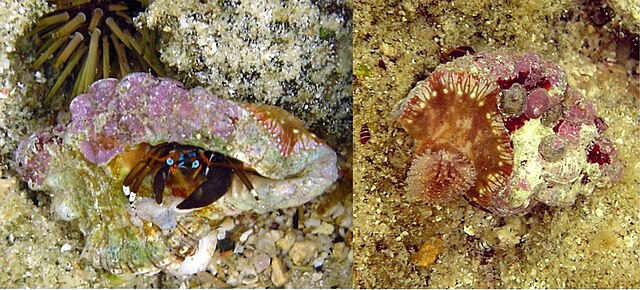Ectosymbiosis is a form of symbiotic behavior in which an organism lives on the body surface of another organism, including internal surfaces such as the lining of the digestive tube and the ducts of glands. The ectosymbiotic species, or ectosymbiont, is generally an immobile organism existing off of biotic substrate through mutualism, commensalism, or parasitism. Ectosymbiosis is found throughout a diverse array of environments and in many different species.
European mistletoe is an example of an ectosymbiotic parasite that lives on top of trees and removes nutrients and water.
Sea urchins, with their many spines, provide protection for the ectosymbiotic parasites that live on them.
Remora fish form ectosymbiotic commensal interactions with lemon sharks in order to scavenge food and travel long distances.
Branchiobdellid annelids are mutualistic parasites. They will attach to a signal crayfish and feed on diatoms, bacteria, and protozoans that accumulate on the exoskeleton.
Symbiosis is any type of a close and long-term biological interaction between two biological organisms of different species, termed symbionts, be it mutualistic, commensalistic, or parasitic. In 1879, Heinrich Anton de Bary defined it as "the living together of unlike organisms". The term is sometimes used in the more restricted sense of a mutually beneficial interaction in which both symbionts contribute to each other's support.
In a cleaning symbiosis, the clownfish feeds on small invertebrates, that otherwise have potential to harm the sea anemone, and the fecal matter from the clownfish provides nutrients to the sea anemone. The clownfish is protected from predators by the anemone's stinging cells, to which the clownfish is immune. The relationship is therefore classified as mutualistic.
Alder tree root nodule houses endosymbiotic nitrogen-fixing bacteria.
Hermit crab, Calcinus laevimanus, with sea anemone
Bryoliths document a mutualistic symbiosis between a hermit crab and encrusting bryozoans.








